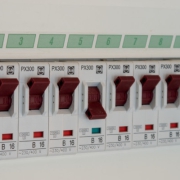LNG cost blowout – Black Mamba bites
Sky-high CAPEX plus cost overruns and a fundamental shift in the LNG market mean trouble for some LNG projects. Some will scratch by but I bet there will be a couple of very high-profile failures.
Just a couple of days ago I used the Black Mamba metaphor for LNG CAPEX cost explosion and we are handed one of the best examples for it right by the current news feed. Gorgon LNG surprised us all with a massive cost overrun. Gorgon is just the last LNG project with cost overruns in this part of the world. On the contrary, it is in excellent company. Remember the Pluto cost explosion? PNG LNG and the Queensland projects have also announced massive cost overruns.
Not that the project had ever been on the cheap side. CAPEX on any of those projects is among the highest to be found in any project in the LNG world. With such a high cost, one question immediately comes to mind. How on earth does any of them ever want to cut a decent return?
We all know that the Asian market and the high prices there served as excuses for many ills of the LNG world. Japan has renounced nuclear power, China is going to be THE big LNG bonanza and also India will come out big as a buyer plus a string of other countries showing strong appetite for LNG. But as it is, such a juicy pie as Asia currently represents, of course, attracts the gaze of others. There is East Africa and North America as runners-up in export. There still is Qatar with LNG production costs multiple times below the new Pacific projects. And there are the existing Atlantic LNG producers that are – albeit not geared towards export to Asia – keen on at least dropping as much spot into this market as they can.
Not really a recipe for a happy ever after for the Pacific projects. I don’t want to discuss the chances for the market in Asia to remain as juicy as it is right now. That will be the subject of another post. The only question I ask here is that since when are predictions of decade-long bull markets coming true?
Let’s concentrate on the cost issue. The prudent project developer always must keep two factors firmly in his gaze.
- Revenue (what income can he realistically hope for)
- Cost (what is that all going to cost him)
With huge projects such as an LNG plant, this calculation is never straightforward as there are many factors to observe but that’s true for any super large project in any industry. The core rotational remains the same and it’s really simple. You have got to make more money than this whole thing costs you.
Applied to LNG projects that means that you need to be able to predict with a certain degree of reasonableness what your core market is going to do. But predicting, especially the future, is never an easy thing as already Niels Bohr observed.
There is no easy fix for this situation. But there is a big difference between the foolish belief that “the market” will remain bullish for 20 years and applying a dose of salt to all the great analysis. Every upturn produces a downturn. Every price rise breeds its demise as innovators and entrepreneurs are much more likely to seek profit from this situation by delivering new solutions. If your project plan or business plan survives a pronounced downturn in economic prospects, you are good. If not, take a good hard look if you still like your project.
Some believe that every whiff of natural gas has to be produced. Some believe that big fields deserve every effort. Engineers will find solutions for everything – the question is if you will be able to pay for it. Not every gas reserve should be developed. And Gorgon or the Queensland projects might just be examples of gas that would have better been left in the ground.
Angola LNG had been built on the assumption that the US would always be a bumper market for LNG. Look how things have turned in just a couple of years. The project is economically exposed and the sole reason it still floats is the unusual Asian market which offers at least the theoretical prospect of healthy margins. Gorgon competes in this market too. Still, Angola LNG was pretty cheap on a per-ton basis compared to Gorgon or some other projects in the Pacific.
Generally, history has shown that hype produces projects on the economic borderline and that when the market turns, many of them will just go away. On Gorgon, much money has been spent and there will be more. At this price tag, that market must stay sky-high for a very long time to keep them afloat. How realistic is that?
Just as the US import terminals were hype projects and went down with the advent of shale, so will some Pacific projects.


















Leave a Reply
Want to join the discussion?Feel free to contribute!